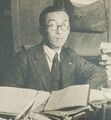October 16: Difference between revisions
(Created page with "{{Selected anniversaries/October 16}}") |
No edit summary |
||
| Line 1: | Line 1: | ||
'''Are You Sure ... (October 16, 2020)''' | |||
{{Are_You_Sure/October 16}} | |||
<br style="clear:both"> | |||
[[File:Are You Sure (16 Oct 2020).png|thumb|left|Screenshot: Are You Sure (October 16, 2020)]] | |||
<br style="clear:both"> | |||
'''On This Day in History and Fiction''' | |||
{{Selected anniversaries/October 16}} | {{Selected anniversaries/October 16}} | ||
Revision as of 17:55, 16 October 2020
Are You Sure ... (October 16, 2020)

• ... that rabbi, physician, and mathematician Joseph Solomon Delmedigo (16 June 1591 – 16 October 1655) followed lectures by Galileo Galilei during the academic year 1609–1610, and was accorded the rare privilege of using Galileo's own telescope; and that, in the following years, Delmedigo often refers to Galilei as "rabbi Galileo," an ambiguous phrase which may simply mean "my master, Galileo"?
• ... that physicist Gustav Kirchhoff (12 March 1824 – 17 October 1887) contributed to the fundamental understanding of electrical circuits, spectroscopy, and the emission of black-body radiation by heated objects; that Kirchhoff coined the term "black body" radiation in 1862; and that two different sets of concepts (one in circuit theory, and one in spectroscopy) are named "Kirchhoff's laws" after him?
• ... that physicist Nicholas Metropolis (11 June 1915 – 17 October 1999) led a group of researchers (including John von Neumann and Stanislaw Ulam) who developed the Monte Carlo method, a statistical approach to deterministic many-body problems?
On This Day in History and Fiction
1655: Physician, mathematician, and theorist Joseph Solomon Delmedigo dies. His Elim (Palms) deals with astronomy, physics, mathematics, medicine, metaphysics, and music theory.
1797: Carl Friedrich Gauss records in his diary that he has discovered a new proof of the Pythagorean Theorem.
1843: Sir William Rowan Hamilton comes up with the idea of quaternions, a non-commutative extension of complex numbers.
1970: Physicist Shoichi Sakata dies. Sakata contributed theoretical work on the structure of the atom, proposing the Sakata model, an early precursor to the quark model. After World War II he campaigned for the peaceful uses of nuclear power.




